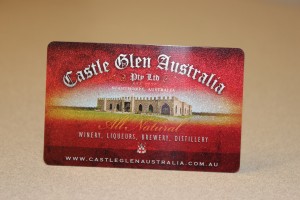How Plastic Cards Are Printed and Why It Matters
There are four main methods of plastic card printing: offset lithography (both traditional and digital), surface printing, silk screening and thermal printing. As I mentioned in my blog post last week, there are three very good reasons why offset litho is an excellent choice when it comes to plastic, including color matching, image quality and speed.
However, there are other options for printing, and it’s important to know how they work, so that you can make an informed choice before you print new plastic cards.

The Different Types of Plastic Card Printing
Surface Printing
Also known as flexography (or “flexo”), surface printing employs similar technology to offset presses. It offers a wider range of inks and works well a variety of substrates, including packaging materials. Flexo can be cost-efficient and flexible on shorter runs but can get costly with larger quantities.
However, when it comes to plastic cards, the biggest difference is coating. When you print on a litho press, you laminate the cards with a PVC overlay to protect them from wear and tear. With surface printing, a varnish is used, and that can wear off. This is especially important to note for plastic cards that get a lot of use, such as membership cards, key cards for electronic door access and smart cards.
Silk Screening
The plastic cards industry is the only one on the planet that can combine offset litho and silk screening technology to create a final product. You cannot print metallic inks any other way but by silk screening. This option is fast and can be beneficial on short runs, but it is limited in the scope of detail that can be printed. You cannot silk screen a half-tone or an image of any kind, and you cannot do any type of screening. From that standpoint, it’s very limited.
Thermal Printing
Thermal printing is a desktop, heat-transfer technology that puts ink on the surface of card, one at a time. It produces a continuous tone and does not use traditional screening algorithms. This type of printing is used only for very short runs. In fact, it’s great if you only want print 100 cards. Bottom line: it’s fast. Otherwise, there is no cost savings. Most often, a company will have a thermal printer in house for printing individual cards.
Digital (Direct-to-plate) Printing
Like traditional offset printing, digital printing can be done in sheet format, allowing you to print multiple cards at a time. However, the difference is that the design goes right from the computer to the press. This works well if you want to print smaller runs of variable data. However, there is no cost savings on larger plastic card runs.
Choose Your Plastic Card Printer Wisely
So, before you decide to have your next batch of plastic cards printed, consider all your options. Be sure to ask these questions:
1. Am I getting the highest quality and most cost-efficient printing services available?
2. What type of printing is best suited to my project?
3. How big of a print run do I need?
4. What kind of inks do I want to use?
5. How will my cards be used?
6. Do I have variable data (bar codes, names, numbers, etc.) that need to be printed on the cards?
7. Can I do the project easily in house, or do I need to go outside the company for printing?
These questions are a great way to help you determine which type of printing is best for you. In the long run, your answer to them will affect your plastic card printing quality, design, speed and much more.


